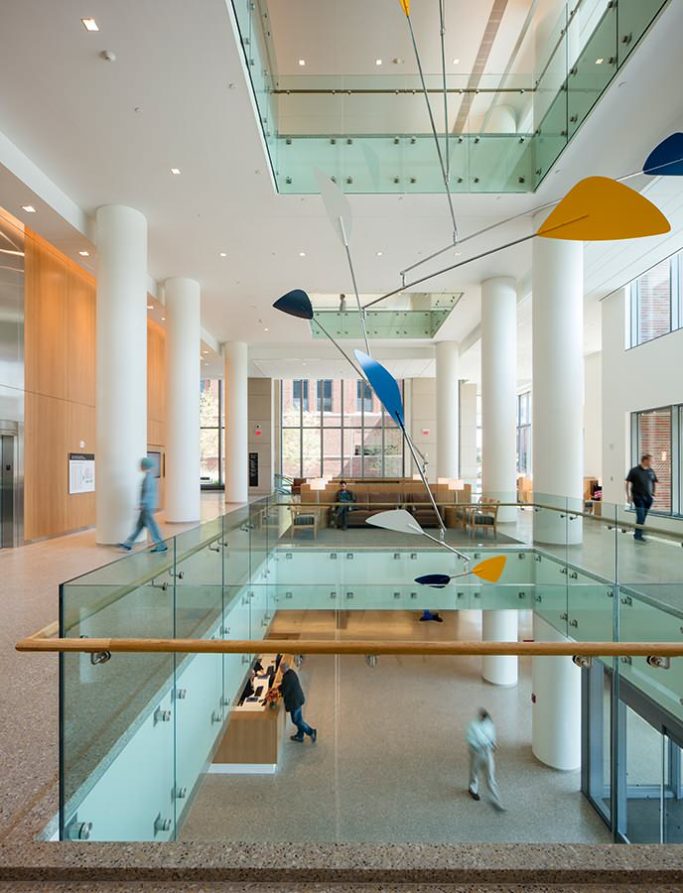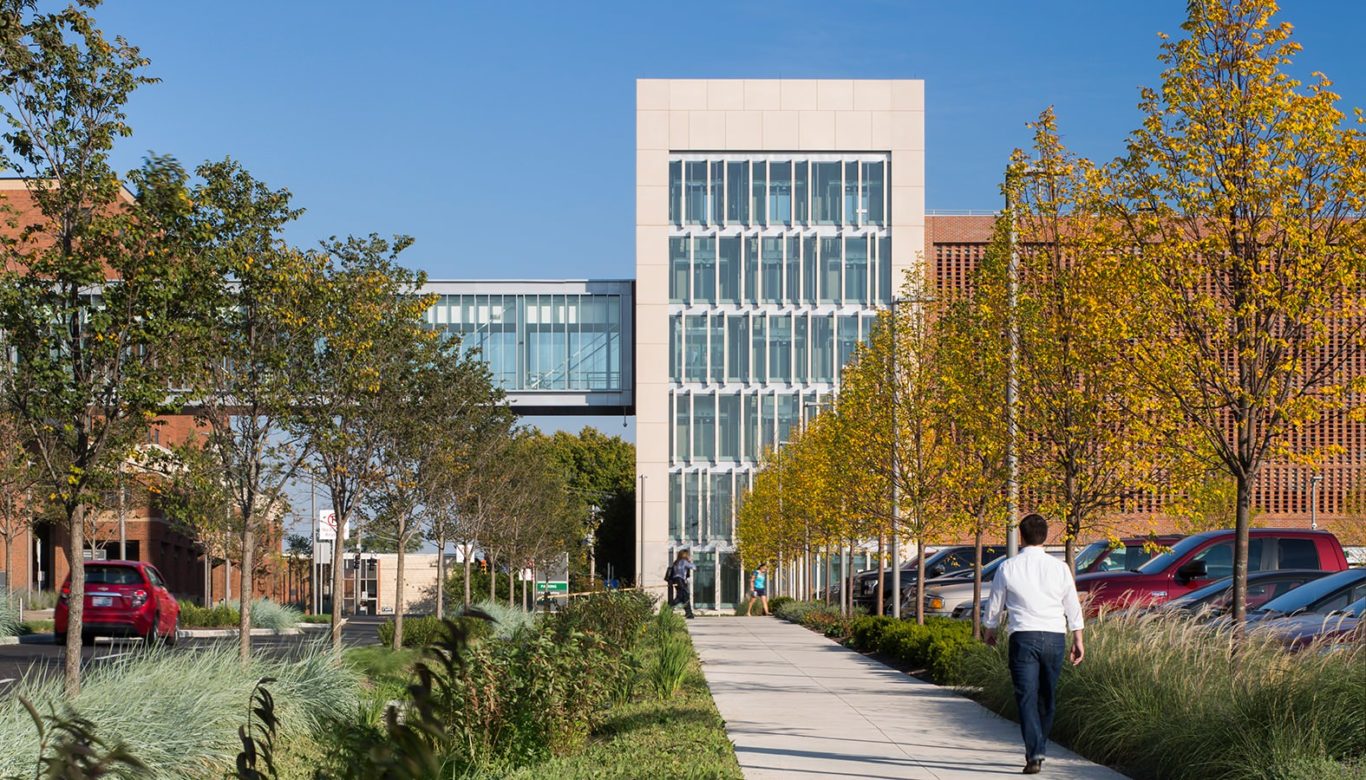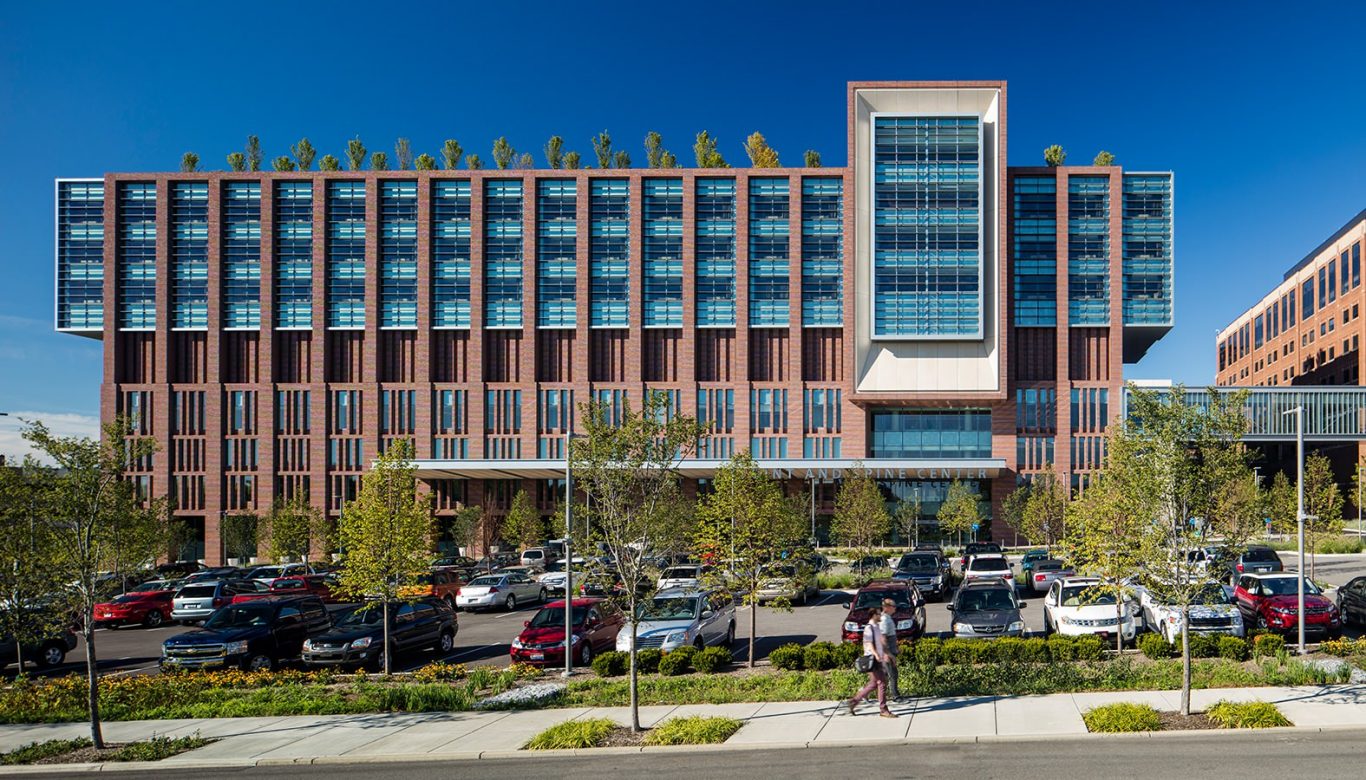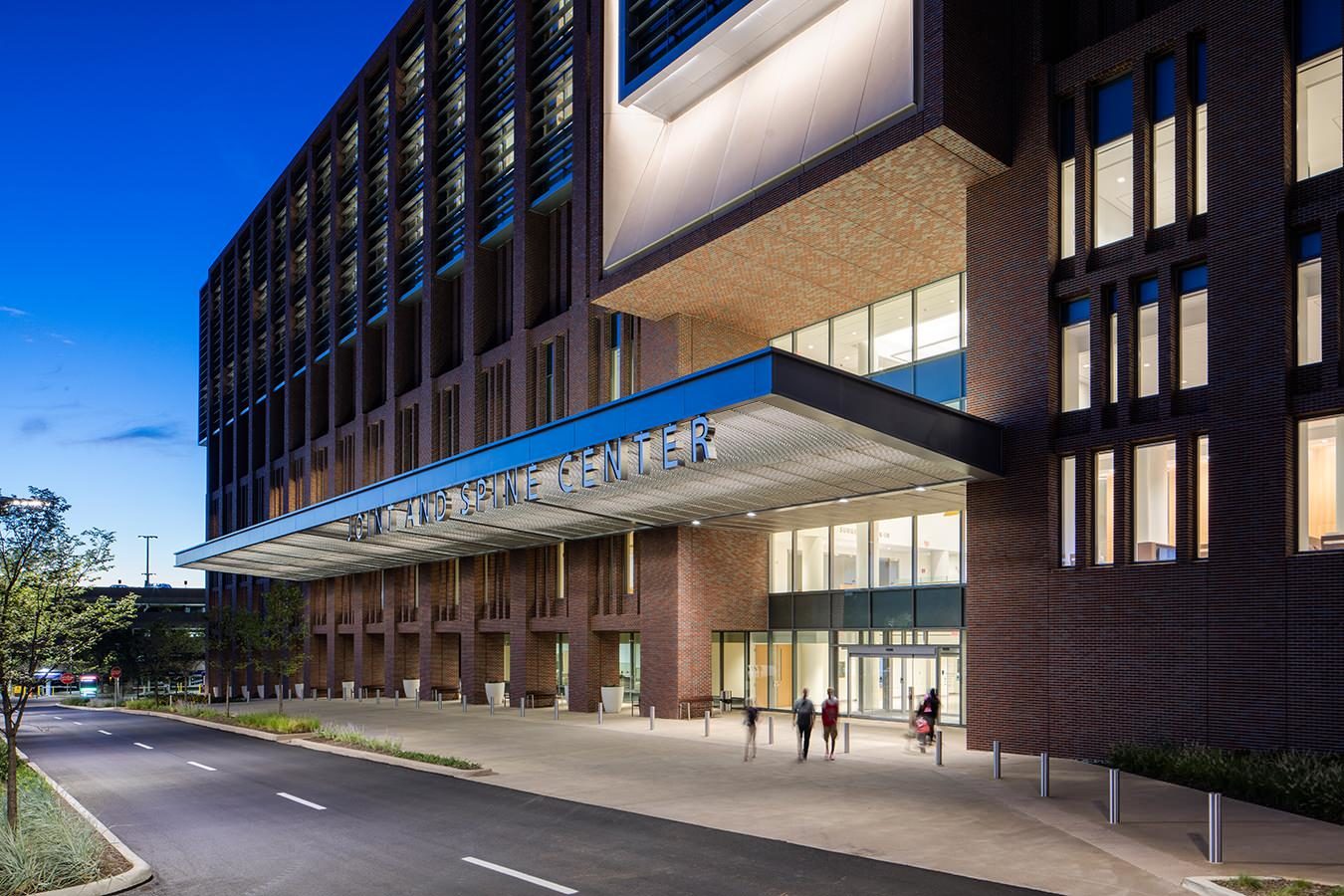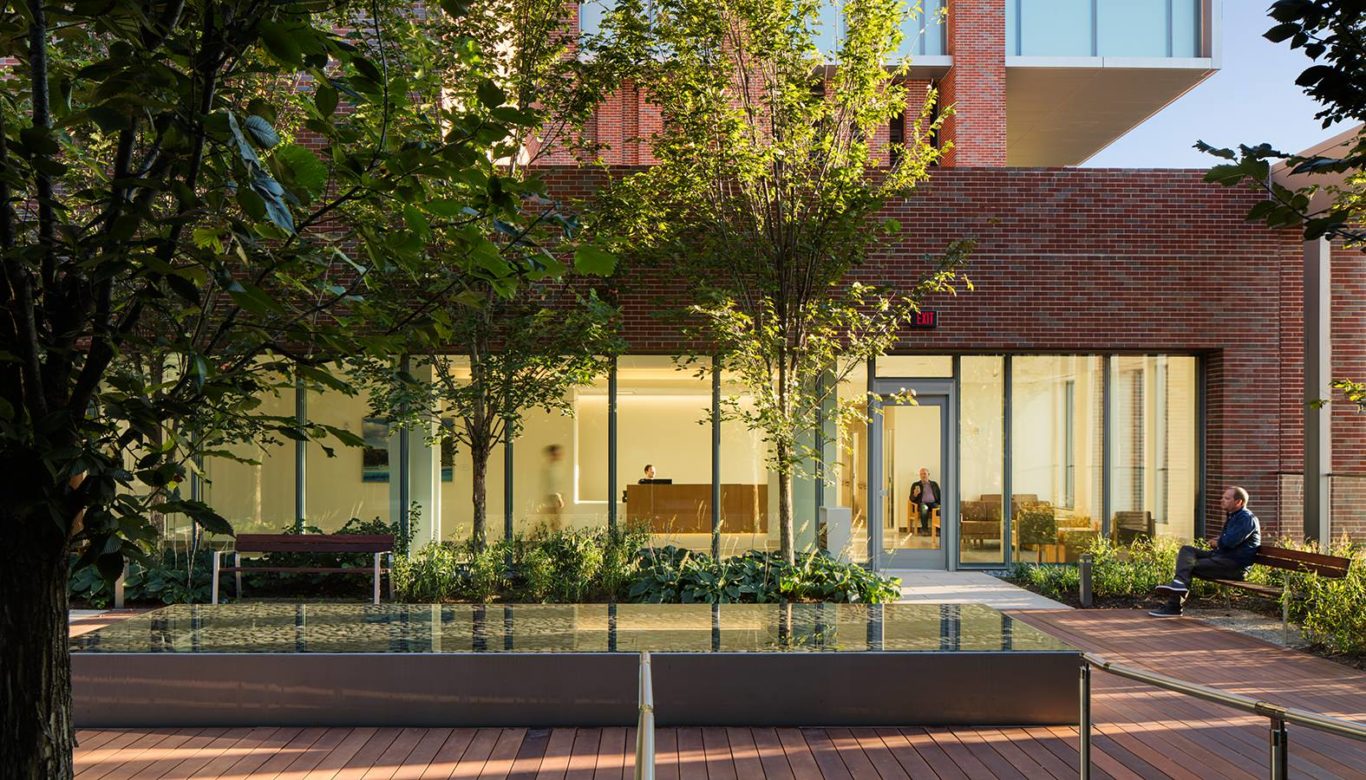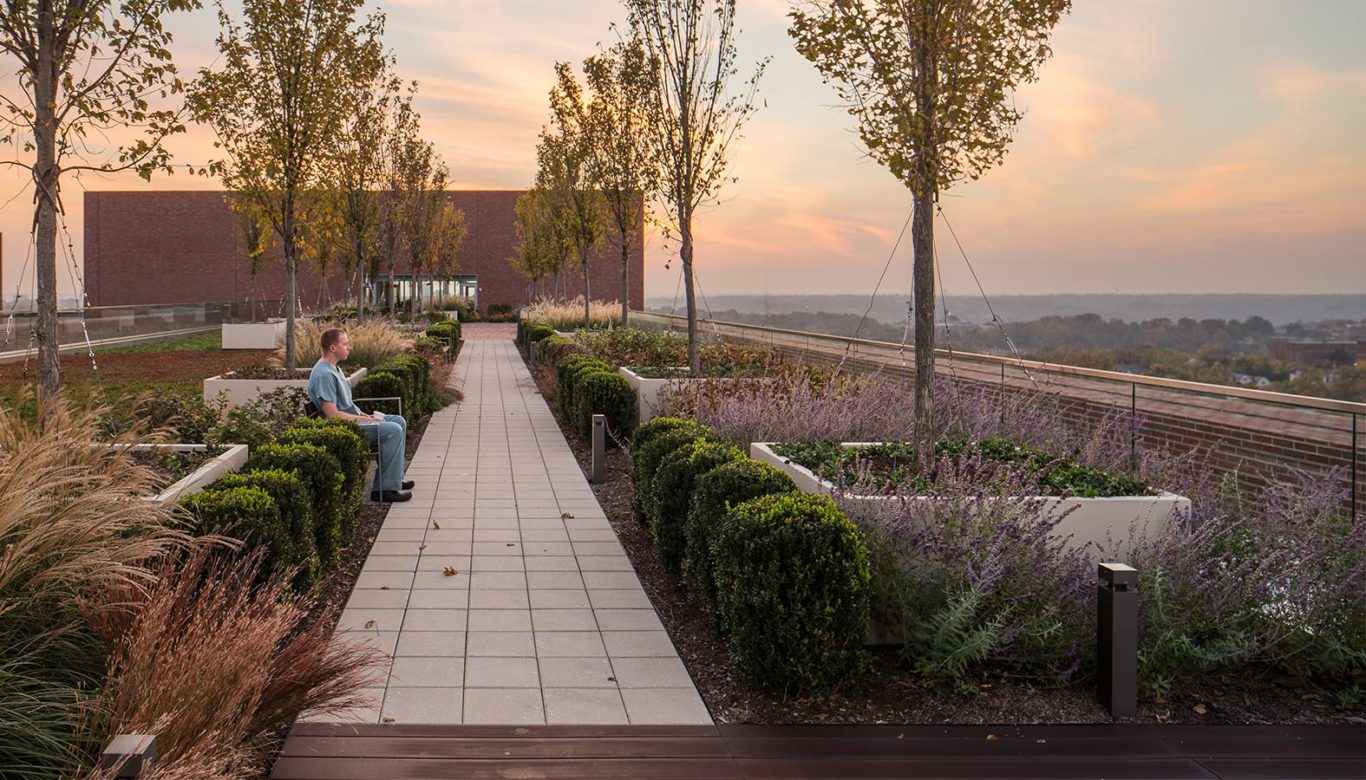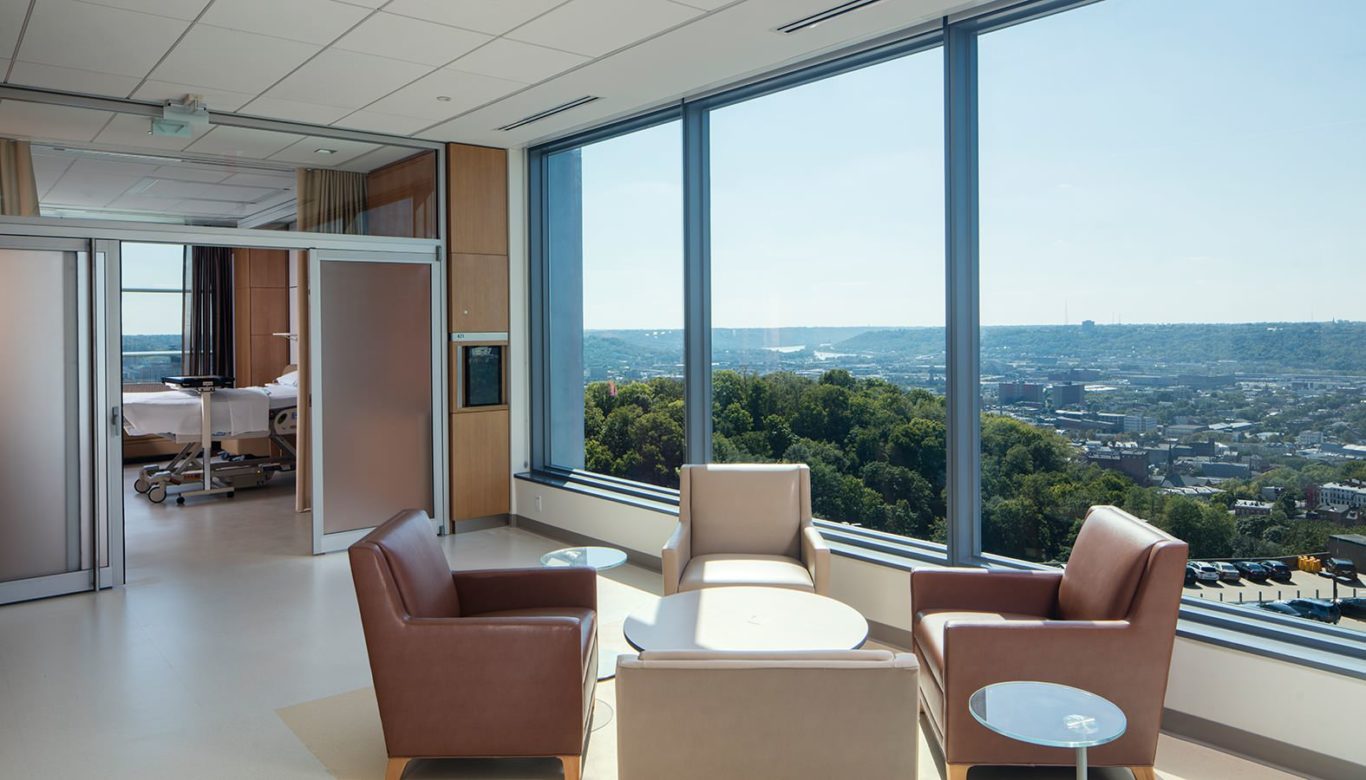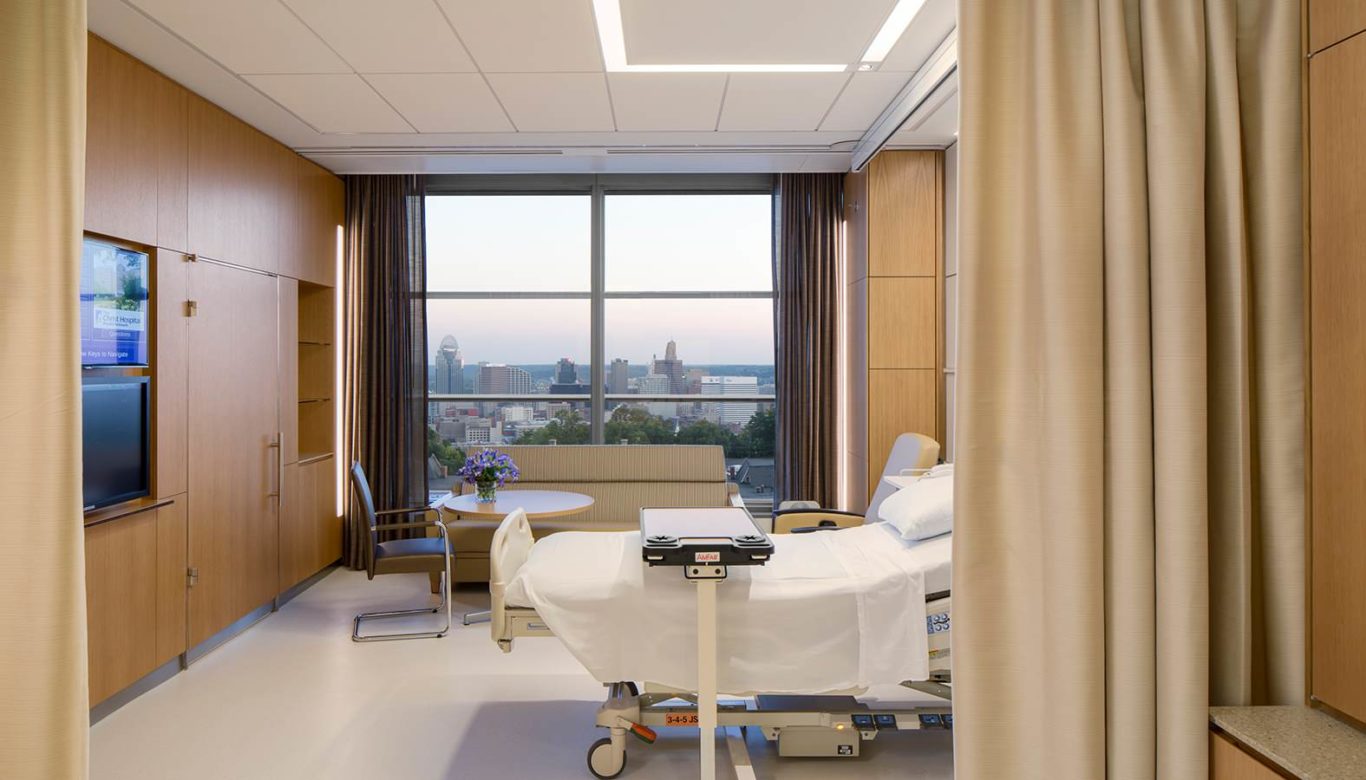Linking an institution’s past and future
Established in 1889, The Christ Hospital ranks among the best medical facilities in the nation. Given its growing needs, the institution tapped SOM to design a 1.4-million-square-foot master plan that included street reconfigurations, a new entrance, and improvements to the central utility plant.
SOM also designed the new Joint and Spine Center as a contemporary addition to the medical campus. The masonry-and-glass building draws from the predominantly red-brick character of the hospital’s existing buildings. The Center’s massing incorporates a projecting “lantern” — a reinterpretation of the campus’s historic cupola — that accents the main entrance, extending up the height of the building.



